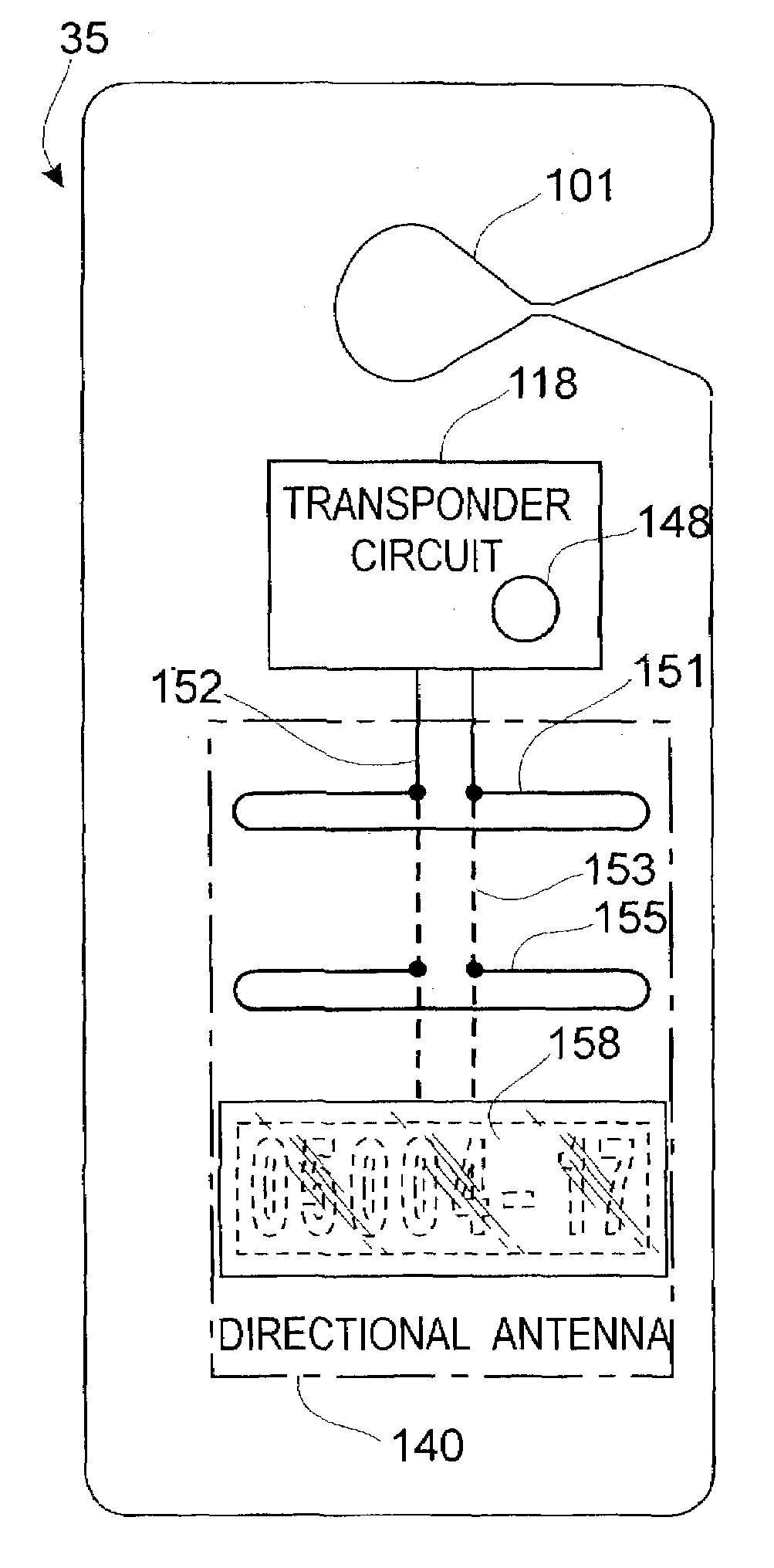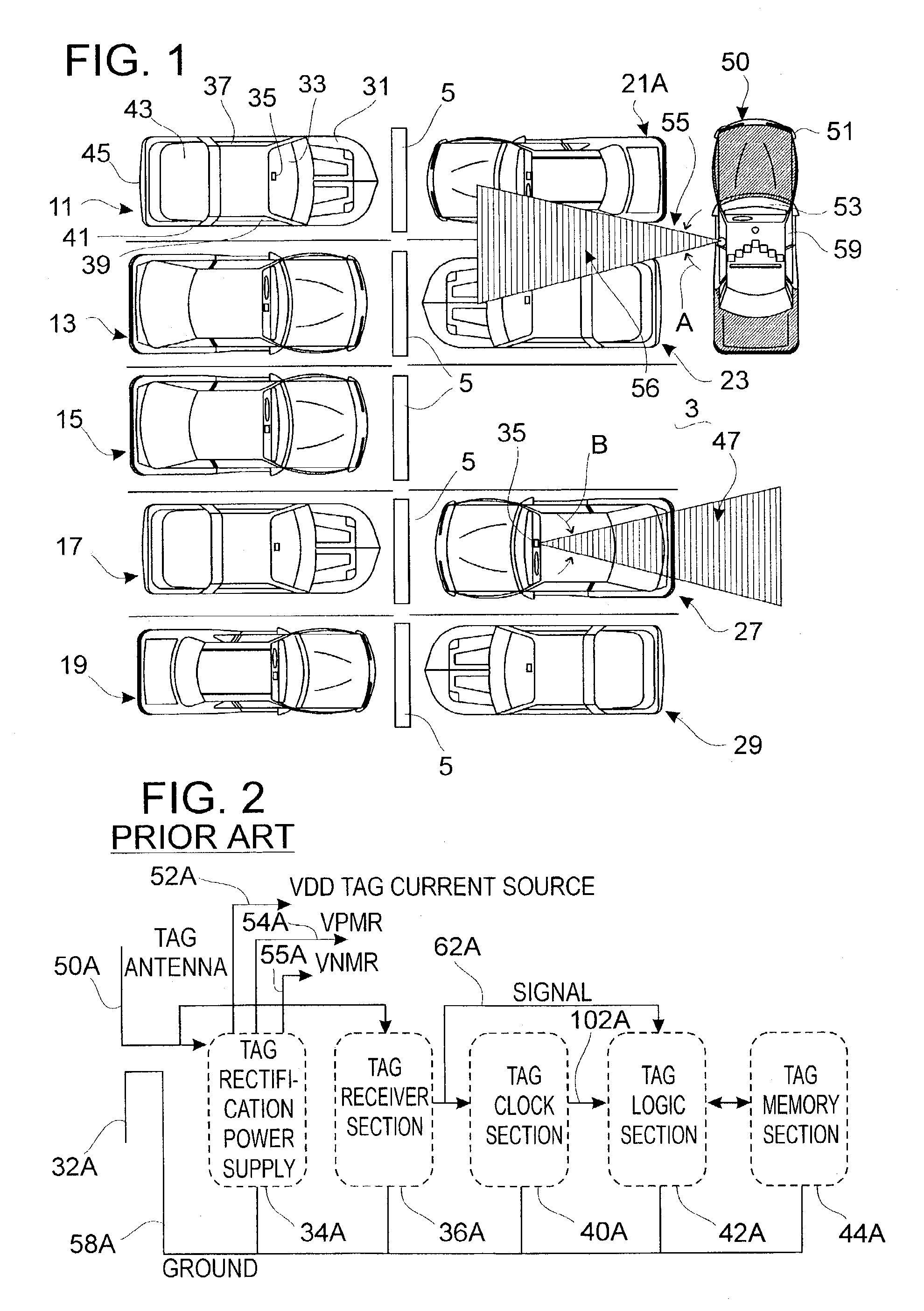Auto hang tag with radio transponder
a radio transponder and auto-hang technology, applied in the field of radio frequency identification transponders, can solve the problems of interrogator and transponder use tags, limit that have not been completely overcome, etc., and achieve the effect of rapid control of parking facilities and increased range and reliability
- Summary
- Abstract
- Description
- Claims
- Application Information
AI Technical Summary
Benefits of technology
Problems solved by technology
Method used
Image
Examples
Embodiment Construction
[0031]FIG. 1 shows partially schematically a parking facility and an exemplary form of parking control system incorporating features of the present invention. The parking facility 3 could be of any form but is illustrated having a double row of parking stalls separated by barriers 5.
[0032]Vehicles such as automobile11 are parked front to front on either side of the barriers 5. The vehicles may be of any style and automobile 11 has a common configuration including a vehicle hood 31, front windshield 33, side windows 37 and 39, metal roof 41, back window 43, and rear portion 45. According to the invention a distinctive automobile hang tag 35 is situated near the rear view mirror of automobile 11; such hang tag has a long range, preferably directional propagation, RFID tag incorporated therein. Each of the other vehicles shown, automobiles 13, 15, 17, 19, 21, 23, 27 and 29 will be understood to be generally similar to automobile 11 for the purpose of explaining FIG. 1. It should be und...
PUM
 Login to View More
Login to View More Abstract
Description
Claims
Application Information
 Login to View More
Login to View More - R&D
- Intellectual Property
- Life Sciences
- Materials
- Tech Scout
- Unparalleled Data Quality
- Higher Quality Content
- 60% Fewer Hallucinations
Browse by: Latest US Patents, China's latest patents, Technical Efficacy Thesaurus, Application Domain, Technology Topic, Popular Technical Reports.
© 2025 PatSnap. All rights reserved.Legal|Privacy policy|Modern Slavery Act Transparency Statement|Sitemap|About US| Contact US: help@patsnap.com



